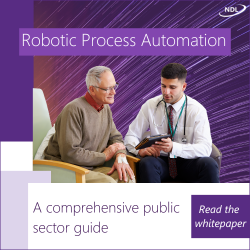
The Geospatial Commission has flagged up the development by the Open Geospatial Consortium (OGC) of a standard for data on subsurface features.
It has been the first organisation to use the Model for Underground Data Definition and Integration (MUDDI) in its development of National Underground Asset Register (NUAR), which will provide a national data source on underground pipes and cables.
This has moved MUDDI towards publication and wider adoption among local authorities and utilities providers in the UK.
The commission’s technical product owner for the NUAR, Neil Brammall, reported in a blogpost on a recent code sprint for MUDDI organised by the OGC – a consortium of experts on geospatial information – which produced protoypes and demonstrators on the standard.
He said: “It was really important for us to support this event and to share the NUAR data model, as the widespread communication, understanding and adoption of a standardised data model across UK utilities and local authorities will be a massive step forward in improving the interoperability of data and ultimately the improvement of data quality across the sector.
“This is one of the key elements of the NUAR programme.”
Documentation needed
Brammall said key learnings of the event included that the NUAR model needs comprehensive documentation and training materials, on which the commission is working, and that there is a need for greater clarity in MUDDI documentation and reference artefacts. The relevant standards working group is also already developing a simplified example model to illustrate key concepts.
“The key message is that both MUDDI and the NUAR data model need clear, simple documentation and artefacts to go alongside them to make sure that some of the more complex structures and concepts are easily understood,” Brammall said.
“We have very much taken this to heart and are working on what this supporting documentation should look like, and how it can be targeted at organisations and individuals with different levels of experience and data maturity, as well as businesses that provide data services to these organisations.”





